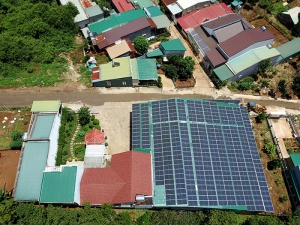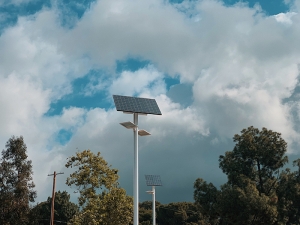Công nghệ PERC trong năng lượng mặt trời là gì?
- 06-01-2022 13:43:43
- 84
PERC technology is advanced, understanding more about it can help you decide if it's right for your solar needs. In this article, we will explain everything you need to know about PERC technology as it relates to solar panels.

What is PERC in solar energy?
An Australian scientist named Martin Green and his team at the University of New South Wales developed PERC technology in the 1980s. The technology takes a traditional solar cell and adds an additional layer to the back of the solar cell. cell. This additional layer is called the passive layer.
How do PERC cells work?
The passive layer acts like a mirror and reflects the light passing through the panel for the first time. This gives a second chance for light to be absorbed by the solar cell and leads to greater absorption of solar radiation.
For years, photovoltaic cell manufacturers have turned all their attention to the front of the battery. PERC technology allows the back of the battery to play an active role.
What are the benefits of PERC solar cells?
Another benefit of PERC solar cells is that they are more flexible. PERC technology works well in low light and high temperatures. By having a greater power density per square meter than traditional types, you can use PERC to achieve the desired output with fewer panels.
The ability to achieve the same output with fewer plates leads to cost savings. Being able to achieve your energy goals for less is always desirable.
At first glance, you may not notice any obvious difference between PERC and typical photovoltaic cells. The construction of both types of cells is similar and both use incident solar radiation to generate the flow of electrons.
The key difference between PERC cell and monocrystalline photovoltaic cell is the additional passivation layer on the back side. This layer is the type that increases the power generation of the panel by increasing efficiency.
How does PERC solar cell work?
Reflect light back
Heat absorption is reduced
This means that in a traditional cell, light waves of higher wavelength will be absorbed by the back layer of the solar cell. The light absorption here increases heat and as a by-product reduces efficiency.
In contrast, the back surface passive layer of PERC solar cells is designed to reflect these higher wavelength light waves so that they are not absorbed. In this way, the thermal energy in the photocell is reduced and, therefore, the efficiency is increased.
Electron recombination is reduced
What is Mono PERC Solar?

How is Solar cell PERC created?
The first step is to apply a surface passivation film behind which is a dielectric passivation layer. Once it has been applied, the back surface passivation film is chemically or laser etched to open small pockets in the layer. These pockets are what allow the panel to absorb more light.
A typical, or traditional, solar cell consists of the following parts from front to back:
N-type versus P-type cells:
What is an N-type solar cell?
The N-type cell is doped with phosphorus, which has more electrons than silicon, giving the cell a negative charge.
N-type cells are immune to boron-oxygen defects, and as a result they are not affected by light-induced degradation (LID). As you might expect, they are positioned as a premium option as they are less likely to degrade over the lifespan of the panel.
What are P-type cells?
P-type cells are typically fabricated with a boron-doped silicon wafer. Since boron has fewer electrons than silicon, it creates a positively charged cell.
P-type cells are affected by light-induced depletion, which reduces the initial yield due to light exposure. This is the most common processing method for photovoltaic cells in history.
Any questions about knowledge related to Solar cell PERC customers can immediately contact us via hotline 0966 966 819 or contact green energy company - Intech Energy for answers and support.
News other
-

How many types of solar inverters are there?
10-01-2022 17:15:06 Details
-

Install a solar battery system properly
10-01-2022 16:25:02 Details
-

The Vietnam Renewable Energy Community organizes a Caravan journey towards the Central region
10-01-2022 09:12:28 Details
-

Solar panel system rotates in the direction of the sun – Up to 30% higher efficiency
10-01-2022 09:11:15 Details
-

Why is solar power in the Central Highlands extremely ”hot” in 2020?
10-01-2022 09:04:02 Details
-

What are solar lights?
10-01-2022 09:01:07 Details







